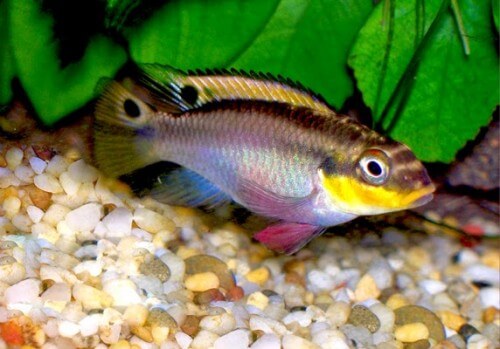The solution developed by the Israeli start-up company will allow, for example, diabetics to check the level of carbohydrates in the product, and not rely on the manufacturer's label
By: Shimon Bogan

For patients with diabetes and various metabolic diseases, an incorrect assessment of the level of carbohydrates, for example, can turn a routine day into a day that ends in the emergency room. in the company Consumer Physics We are developing a sensor for the composition of food and different materials, inspired by the colorful striped fish.
The colorful and spectacular striped fish Striped Kribensis (Pelvicachromis taeniatus) lives and thrives in the rivers of West Africa, mainly in Nigeria and Cameroon. The breeding of members of our species in home aquariums is easy and common.
The natural environment of these fish is in shallow, murky and murky waters. In such bad conditions, no predatory fish is equipped and cannot find its food in the usual and familiar ways - not by sight, not by sound, not by smell (like sharks), not by movement, not by increasing starlight (like nocturnal predators), not by sensing heat ( like certain snakes) and not by luck (like a blind hen). A unique feature that developed in these certain fish during evolution distinguishes them from other competitors for food sources, on the one hand, and distances them from the environment and the danger of other predators, on the other hand.
The science of visible and invisible light to human eyes teaches that, while the high turbidity of the water blocks most of the visible light by refraction and deflection of the radiation in all directions, the red and infrared rays pass in a straight line without distortions. That's why researchers at the University of Bonn, Germany, assumed that heat-sensing organs should be sought in our fish. After not finding any, they discovered to their surprise that his eyes are equipped with sensing cells for the intermediate radiation between the visible red and the infrared emitted by hot bodies, and his mind is prepared to process the received signals and analyze them. This radiation is called near infrared (NIR Near Infra Red).
In reflecting light in the NIR range, each organic material has its own unique spectral expression, a kind of fingerprint. The overall pattern of such radiation from a collection of different organic materials is the unification of all the individual instances. That is, each chemical component contributes to the total spectrum according to its relative part in the mixture.
The favorite food of this special and wonderful fish is freshwater snails. In the worst environmental conditions, he "sees", identifies and locates his favorite prey as a defined and preferred cluster of proteins, fats and sugars, based on the NIR rays reflected from it. Of course, with this method, the fish is able to "see" the entire environment of flora and fauna near it, and chooses the spectrum embedded in its brain as the most delicious.
The Israeli team of Consumer Physics, Inc. from Herzliya, takes this innate ability and brings it to an unprecedented distance and height. In their vision, the entrepreneurs, developers and engineers see each of us equipped with a SCiO, a miniature sensing device in the field in question, when the fish's optic nerves replace cellular communication for the transmission of signals, and the brain replaces cloud computing for processing and analyzing the information.
The device will allow us to "see" the content and composition of the food and preparations we wish to consume for our health and pleasure. We can get in seconds all the necessary information about the composition - concentration of carbohydrates, protein content, fat level. We can make decisions about freshness and ripeness, about similarity to products we know, about conformity to the manufacturer's statements and conformity to our expectations.
As it is said "Don't look at the jug but at what is in it" (Fathers Chapters) - it is even possible to comparatively identify the variety, geographical origin, and age of a wine.
Unlike the beloved fish, this is an immediate learning system, an evolution that is measured in seconds instead of millions of years, whose information base and the selection of products it covers will expand with each additional use. At any moment the device can be "taught" to sense and analyze other substances besides food, such as: medicines, cosmetics, plants, soil, plastics, fuels and oils and more.
